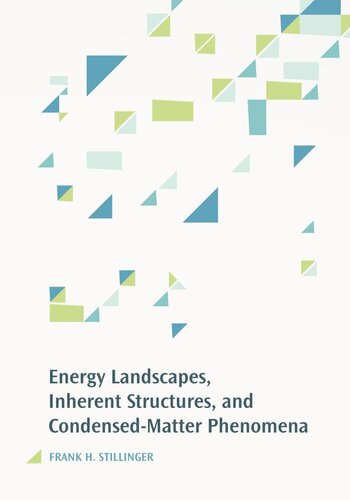

Most ebook files are in PDF format, so you can easily read them using various software such as Foxit Reader or directly on the Google Chrome browser.
Some ebook files are released by publishers in other formats such as .awz, .mobi, .epub, .fb2, etc. You may need to install specific software to read these formats on mobile/PC, such as Calibre.
Please read the tutorial at this link: https://ebookbell.com/faq
We offer FREE conversion to the popular formats you request; however, this may take some time. Therefore, right after payment, please email us, and we will try to provide the service as quickly as possible.
For some exceptional file formats or broken links (if any), please refrain from opening any disputes. Instead, email us first, and we will try to assist within a maximum of 6 hours.
EbookBell Team

0.0
0 reviewsThis book presents an authoritative and in-depth treatment of potential energy landscape theory, a powerful analytical approach to describing the atomic and molecular interactions in condensed-matter phenomena. Drawing on the latest developments in the computational modeling of many-body systems, Frank Stillinger applies this approach to a diverse range of substances and systems, including crystals, liquids, glasses and other amorphous solids, polymers, and solvent-suspended biomolecules.
Stillinger focuses on the topography of the multidimensional potential energy hypersurface created when a large number of atoms or molecules simultaneously interact with one another. He explains how the complex landscape topography separates uniquely into individual "basins," each containing a local potential energy minimum or "inherent structure," and he shows how to identify interbasin transition states—saddle points—that reside in shared basin boundaries. Stillinger describes how inherent structures and their basins can be classified and enumerated by depth, curvatures, and other attributes, and how those enumerations lead logically from vastly complicated multidimensional landscapes to properties observed in the real three-dimensional world.
Essential for practitioners and students across a variety of fields, the book illustrates how this approach applies equally to systems whose nuclear motions are intrinsically quantum mechanical or classical, and provides novel strategies for numerical simulation computations directed toward diverse condensed-matter systems.